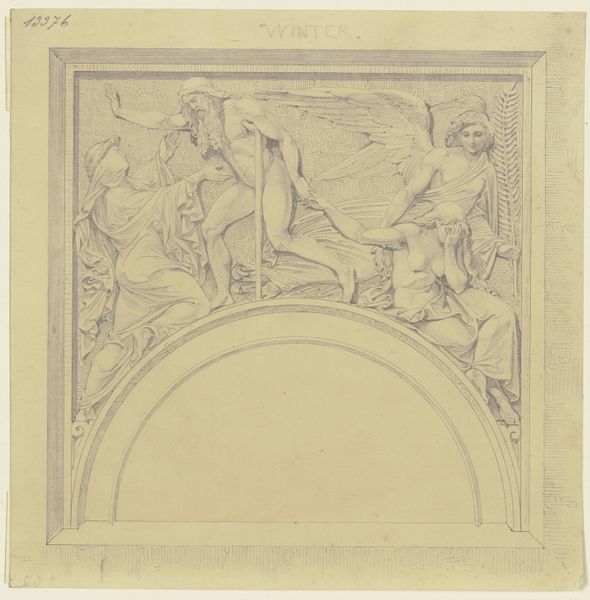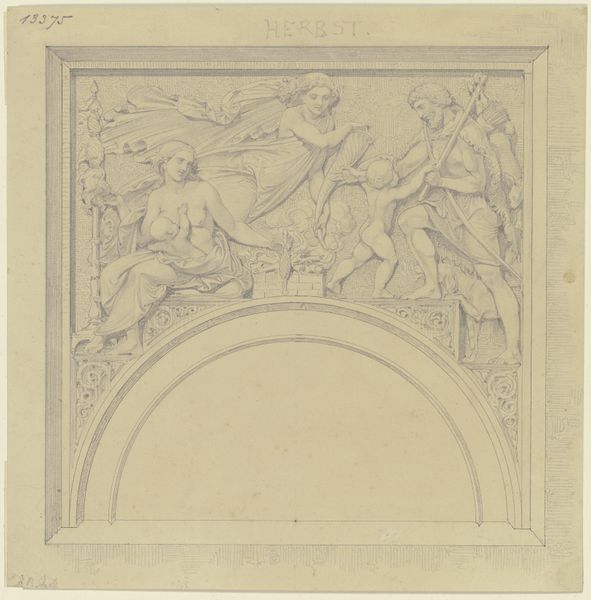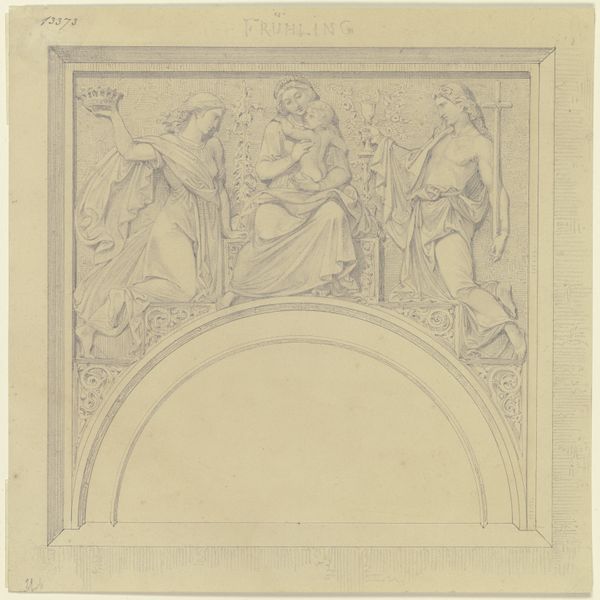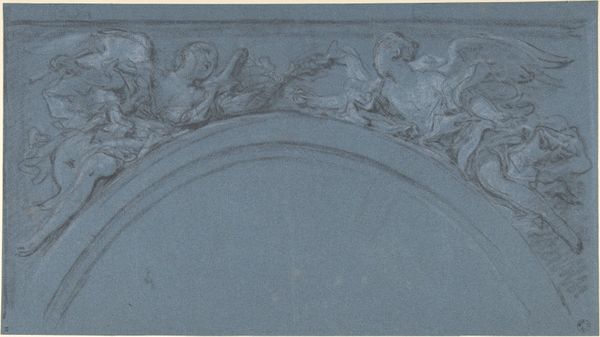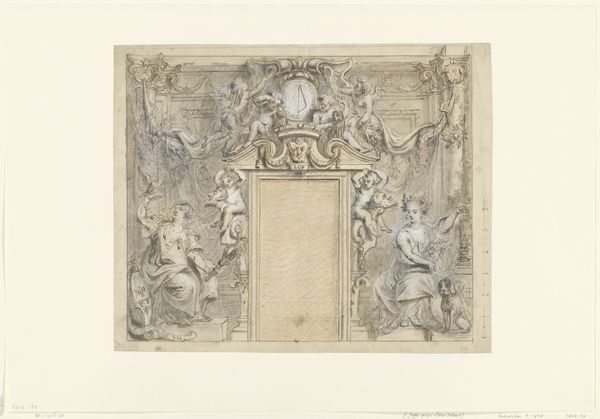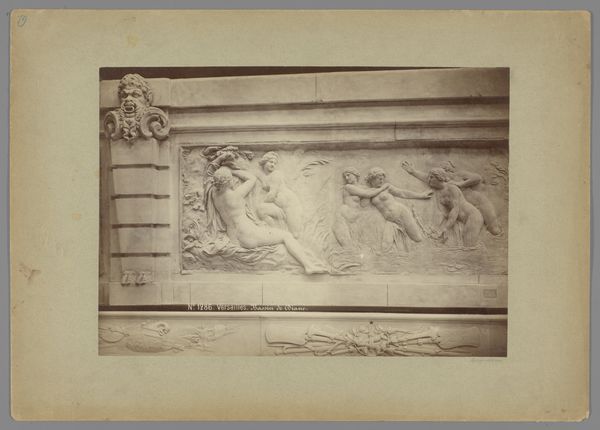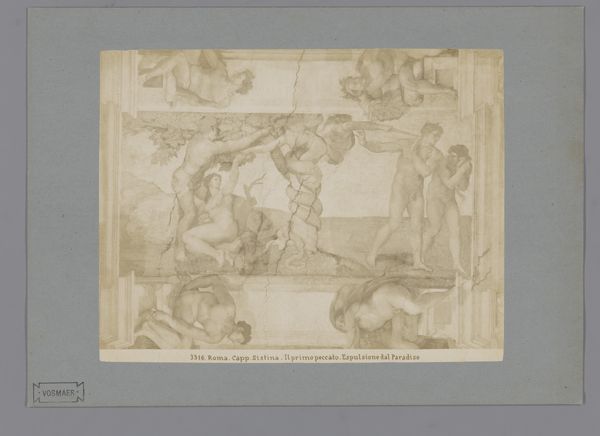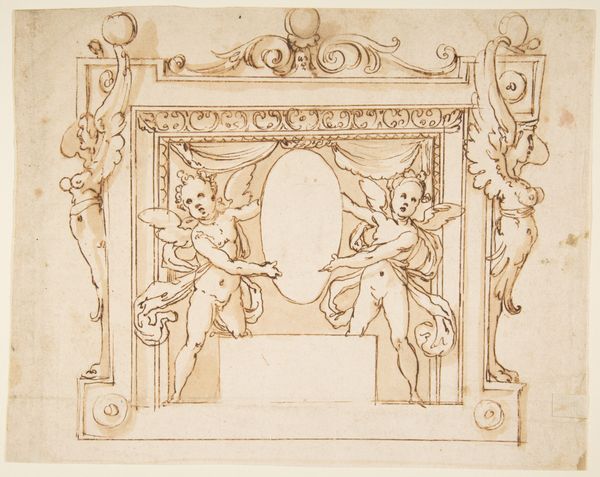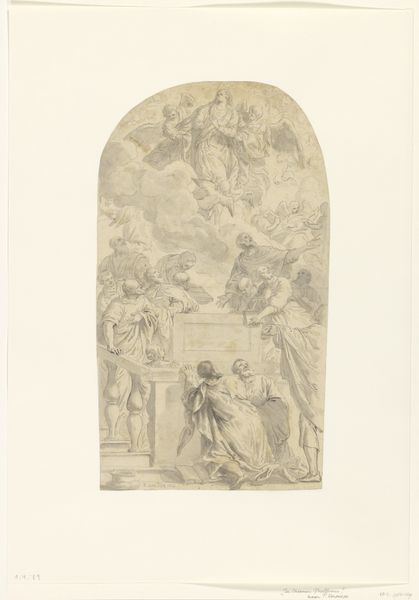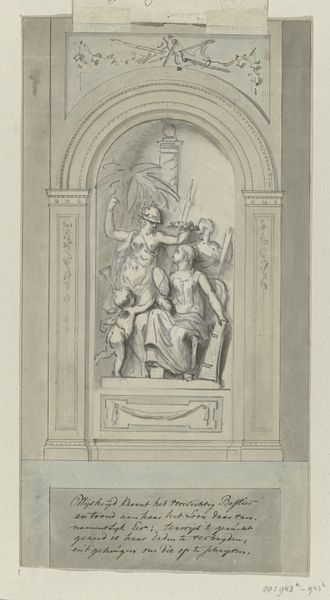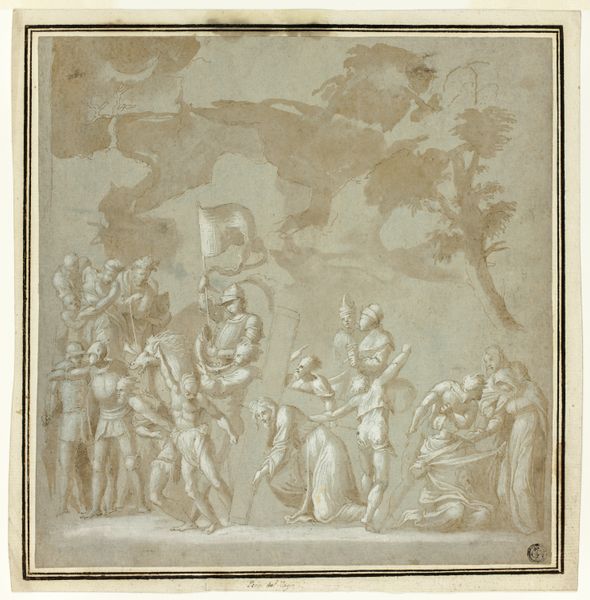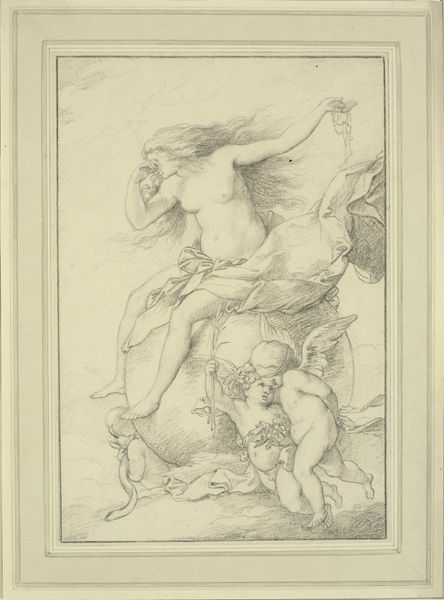
drawing
#
drawing
#
16_19th-century
#
allegory
#
landscape
#
classical-realism
#
history-painting
#
nude
Copyright: Public Domain
Editor: This drawing, entitled "The Summer" by Johann Baptist Scholl the Younger, seems to come from the 19th century. It is currently located at the Städel Museum and done with graphite. It’s hard to tell exactly what the space represented in the work would have been, but the border almost makes me think it was some sort of illustration to accompany a printed work. What is your read of this piece? Curator: As a materialist, I'm drawn to the process of its creation. How was this drawing meant to be reproduced? Was it perhaps for a decorative frieze, intended to adorn a building, and celebrate summer's bounty? I notice that even in the drawing itself, the materiality is emphasized through the distinct shading of the figures and their textiles. Were they celebrating a particular class identity, even as their own identities were suppressed as the tools and employees for industry? Editor: I hadn't thought about the social implications behind the depiction of summer. You’re saying the idyllic depiction might have more to do with who this art was created *for* and what that social group wanted to feel like they had control over? Curator: Precisely. Consider the very labor required to produce this image. The graphite, the paper, the artist's time... each element embodies a set of social relationships tied to production. The work invites reflection on what meanings such images held for those involved in creating and consuming art, and how those meanings evolved in a world rapidly changed by industrial technologies. How do the materials reflect consumption? What does this composition celebrate? Editor: This discussion has really expanded how I initially understood the work. The drawing isn’t just an image; it's an artifact embedded in a network of production, labor, and social meaning, that asks questions that simple themes just can't explore. Curator: Exactly, it encourages us to look at art beyond aesthetics.
Comments
No comments
Be the first to comment and join the conversation on the ultimate creative platform.
